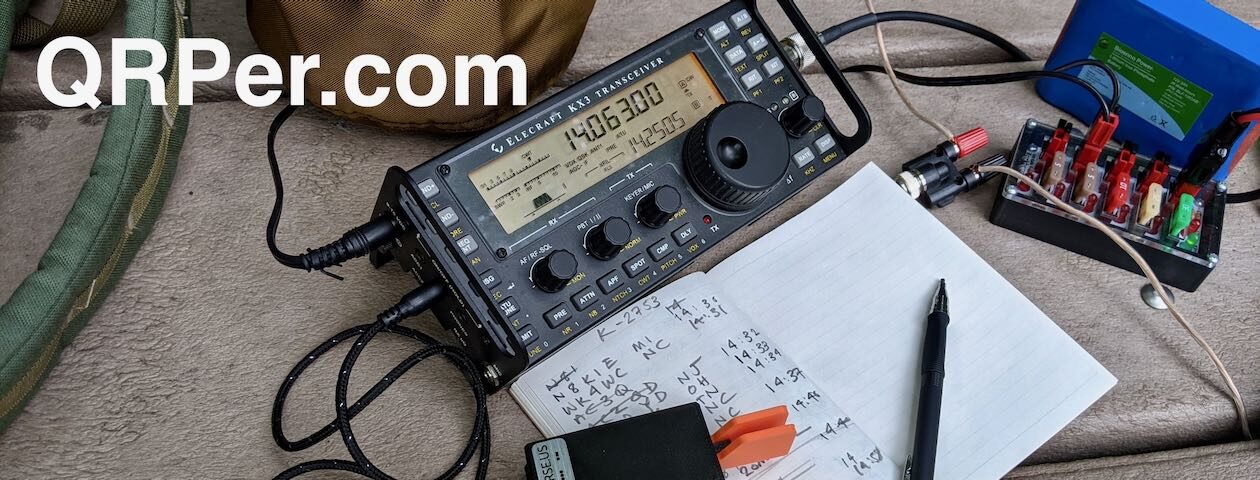 I’m very fortunate in that over the past few years I’ve accumulated a number of QRP radios that I use in rotation when I do park and summit activations.
I’m very fortunate in that over the past few years I’ve accumulated a number of QRP radios that I use in rotation when I do park and summit activations.
I’m often asked for advice on choosing radios, and as I’ve mentioned in the past, I feel like the decision is a very personal one–everything is based on an operator’s own particular preferences.
I’ve written formal reviews about most of the field radios in my collection over the years. In those reviews, I try to take a wide angle view of a radio–I try to see how it might appeal to a number of types of operators: field operators, DXers, summit activators, contesters, rag-chewers, casual operators, SWLs, travelers, outdoor adventurers, mobile operators, etc. I highlight the pros and cons, but I don’t focus on my own particular take because, again, my style of operating might not match that of readers. I try to present the full picture as clearly as I can and let the reader decide.
On that note, I thought it might be fun to take a radio out for a field activation and spend a bit of time explaining why I enjoy using it and why it’s a part of my permanent field radio collection. Instead of taking that wide-angle view of a radio like I do in magazine reviews, I share my own personal thoughts based on long-term experience.
Each new video in the Getting To Know You series will highlight one of the field radios from my field radio collection. I’ll spend time in each video explaining what I personally appreciate about each radio, then we’ll do a park or summit activation with the radio.
I’ll release these every few weeks or so–when the notion strikes me. They will not be on a regular schedule, but I hope to include each of my radios in this series over the the next year.
The Ten-Tec Argonaut V
 The third radio in the Getting To Know You series is my Ten-Tec Argonaut V (Model 516).
The third radio in the Getting To Know You series is my Ten-Tec Argonaut V (Model 516).
I’ve always been a big fan of Ten-Tec products because I love their focus on quality, high-performance receivers, and benchmark audio fidelity.
Ten-Tec has produced some impressive radios over the years and was a trail-blazer in the world of QRP with their Power Mites and original analog Argonaut series (check out these and more T-T radios here).
When Ten-Tec manufacturing was located in Sevierville, Tennessee, I knew many of the employees of the company and even did Alpha and Beta testing for their QRP radios like the Patriot, Rebel, and Argonaut VI.

I purchased my Argonaut V used in 2021 when I saw it for sale on QTH.com. The price was right and, frankly, I wanted a Ten-Tec radio back in my life.
In the activation video (below) I’ll speak to all of the reasons I love the Argonaut V, why I think it’s so unique, and why I’ve no intention of ever selling it. Then, we’ll perform a POTA activation with it.
Keep in mind that my perspective will primarily focus on HF CW operating–I don’t actually own a microphone for the Argonaut V, but I do plan to at some point.
Lake James State Park (K-2739)
 On Sunday, August 13, 2023, I made a detour to Lake James State Park en route to visit my parents in Hickory, NC. As I’ve mentioned many times before, Lake James is one of the easiest parks I can hit in my travels and it’s open every day of the week–in the summer, it’s also open quite late which is a bonus.
On Sunday, August 13, 2023, I made a detour to Lake James State Park en route to visit my parents in Hickory, NC. As I’ve mentioned many times before, Lake James is one of the easiest parks I can hit in my travels and it’s open every day of the week–in the summer, it’s also open quite late which is a bonus.
The only negative with evening activations at Lake James is fighting the mozzies–they can be persistent!
I picked out a picnic table close to the car and pulled the Argonaut V from my Husky latching box.
I then immediately deployed my MW0SAW 40 meter End-Fed Half-Wave antenna. Since the Argonaut V doesn’t have an internal ATU, the EFHW would give me the flexibility to operate on 40, 20, 15, and 10 meters natively.
Of course, it was in the early evening, so I only intended to hop on 40 meters, but I had the option to move up the band if needed.
After deploying my antenna, I recorded the “Getting To Know You” portion of the activation video–I’d encourage you to check that out below!
Time to hop on the air! Continue reading Getting To Know You Series: The Ten-Tec Argonaut V (Model 516) – My thoughts, notes, and a POTA activation!
























































